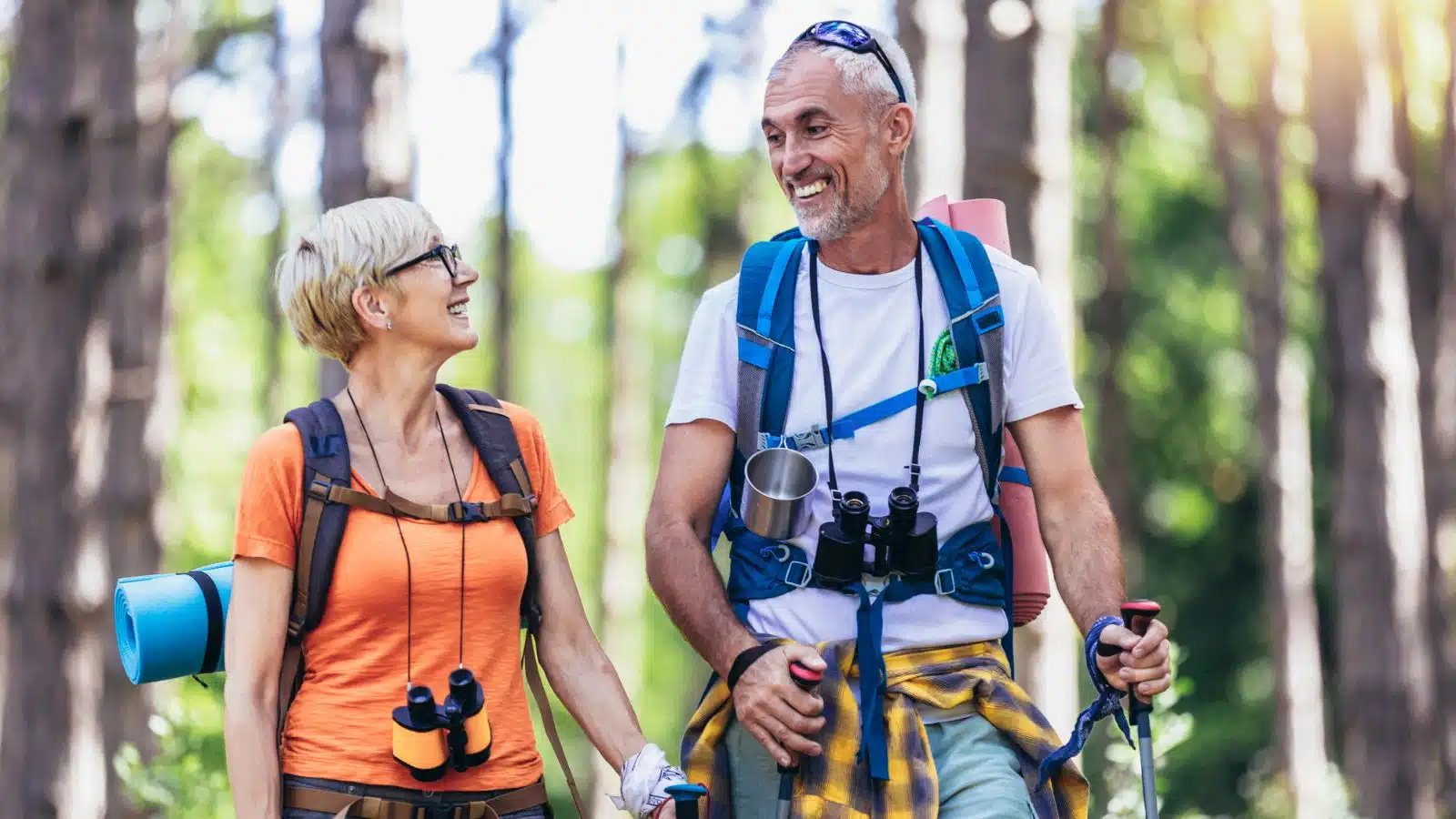It’s funny. You go away for a relaxing vacation, then spend every waking hour rushing from one attraction to the next. It’s exhausting! Even worse, all that walking can leave your feet in ruins…
Alas, there’s nothing like painful feet to spoil a day of sightseeing. It’s an easy issue to overlook before you go, too. You picture yourself waltzing from one sight to the next – not hobbling between them. Thankfully, there are many effective ways to prevent tired feet from causing too much trouble on your trip. Here are 15 of them:
1. Wear Tried and Tested Shoes

Rule number one is to wear good, supportive footwear whenever you’re exploring. It might be tempting to wear slip-ons or flip-flops if you’re somewhere hot, but you need shoes or sandals designed for walking.
Make sure they’re not brand new, either. Pack footwear that you’ve worn often (and in similar situations to what you’ll be doing abroad) so you know it won’t cause problems.
2. Put Your Legs Up the Wall

There’s a pose in yoga where you lay on your back next to a wall (feel free to place a folded towel or blanket underneath for padding) and put your legs above you so that your feet rest on it.
This “legs up the wall” pose is an excellent way to take the pressure off tired feet. The blood drains away from them, alleviating swelling and reducing tension. Try doing it for five to ten minutes each night in your hotel room.
3. Take a Golf Ball

If you’re a sucker for pain, pack a golf ball (or any other hard ball of a similar size) in your suitcase. Every evening, you can place it under each foot and use it to “massage” your soles.
Standing or sitting down, put the ball under the arch of one foot and gently roll it back and forth and/or in a circular motion. This “foot rolling” should relieve tension and improve muscle function, helping you recover quicker following a long day of sightseeing.
4. Wear Compression Socks

Compression socks are exactly what they sound like – tight-fitting socks that squeeze your feet and calves (assuming they pull that far up your leg).
Popular among athletes, people recommend wearing them on long flights to prevent deep vein thrombosis. But they may also be useful once you arrive and start exploring. The pressure will help regulate and improve blood flow, which should reduce foot discomfort and swelling.
5. Start Walking More Now

One of the primary reasons people get tired feet when they travel is because they’re not used to walking so far! It’s not uncommon to do 20,000 to 30,000 steps per day (roughly 8.5 to 14 miles) while sightseeing, which is a big step up from what most of us do ordinarily.
That’s why it’s sensible to prepare your feet for what’s to come! Start walking more before you go, and you’ll suffer less on the trip.
6. Get Taxis and Use Public Transport

Is walking between locations a good idea? It’s an excellent way to explore and see more of a destination. But if it will destroy your feet and make them so painful that it puts a downer on the experience, it isn’t worth it.
Consider hopping in a cab or an Uber, hiring a private driver, or using public transport instead. And remember, you don’t have to wait until you’re in pain to do this! Prevention is better than cure. If there’s a danger your feet will struggle, take alternative forms of transport from the outset.
7. Take Anti-Inflammatories

Carrying some anti-inflammatories around in your daypack is also sensible. They can be a lifesaver when sightseeing and your feet start hurting, but you still have hours of activities ahead.
Depending on where you’re going, you might want to pack them in your travel first-aid kit before you leave. While almost every country will have anti-inflammatories available at pharmacies, a language barrier can make it harder to know what you’re buying.
8. Take Blister Plasters

Aching feet aren’t fun, but blisters can be deeply unpleasant. Hopefully, wearing familiar and trusted shoes will stop you from getting any. There’s no harm in taking blister plasters just in case, though.
Similar to carrying anti-inflammatories, it’s nice to know there’s something you can do to alleviate the discomfort.
9. Stay Hydrated

Dehydration is a recipe for all sorts of trouble, yet few people realize it can also lead to muscle soreness – including sore feet. It’s one more reason to take a bottle of water on your travels. Sipping it throughout the day will help you stay hydrated.
If you want to go one step further, consider taking some electrolytes as well. You’ll replace the minerals lost through sweat, amplifying the benefits of drinking water alone.
10. Don’t Overdo It

Do you really need to see that landmark on the other side of the city? Or explore the third museum of the day? Or stroll through the park to get to the restaurant? If it’s not essential, and your feet are already struggling, then consider making alternative plans.
Ultimately, this comes down to knowing your limits. You might be able to walk further on day one. But if it’s going to make it harder to enjoy day four because your feet are wrecked, then it might be better to rest.
11. Get a Foot Massage

You’re on vacation, so why not treat yourself? Getting a professional foot massage will help you relax, tease out any knots, and reduce pain. It’s not just about gratification during that moment, either. A massage or two could be a lifeline that enables you to continue walking long distances throughout your trip.
12. Get a Room with a Bath

Most people seek rooms with a view. But when you’re trying to prevent or treat aching feet, a bath could be the real deal-breaker. After a long day of sightseeing, you can run a hot bath and soak those weary muscles or buy some ice to create an ice bath for your feet. Both options will facilitate muscle recovery, but the cold would provide superior pain relief.
13. Wear Breathable Socks

One of the best ways to prevent blisters is wearing the right socks. Leave the cotton pairs at home! You want socks that are breathable, moisture-wicking, and don’t have seams that could rub in the wrong places (e.g., on your heel or toes). Double-layered socks also help reduce rubbing, so they’re worth wearing abroad – especially when hiking.
14. Take Multiple Pairs of Footwear

Packing one pair of trusty shoes is great. Having two or three that you can rotate between is even better. You have a back-up if your shoes get wet, for example. Also, if you get a blister, you can switch to another pair. Your feet might sit slightly differently in them, taking the pressure off the sore spot.
15. Remember Sunscreen

Wearing sandals, flip-flops, or walking around barefoot on a sunny day? Don’t forget to put sunscreen on your feet. Aches and blisters aren’t fun, but sunburn is no better. That red, damaged skin will be sore regardless, but it’ll feel torturous when you put socks and shoes on later.
MORE ARTICLES LIKE THIS COMING UP:
Europe’s 15 Most Beautiful Cities to Visit in Your Lifetime

European cities have history, charm, and aesthetic appeal. Here are 15 particularly beautiful examples that everyone should visit at least once!
EUROPE’S 15 MOST BEAUTIFUL CITIES TO VISIT IN YOUR LIFETIME
These 12 Stunning Destinations Are Criminally Underrated

Some of the world’s best travel destinations fly under the radar. Here are 12 such places that deserve more attention from tourists.